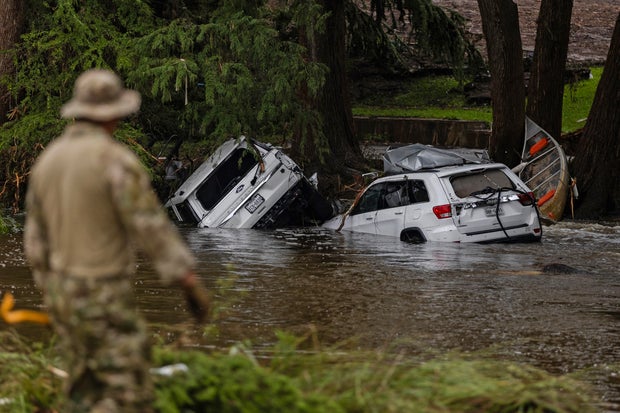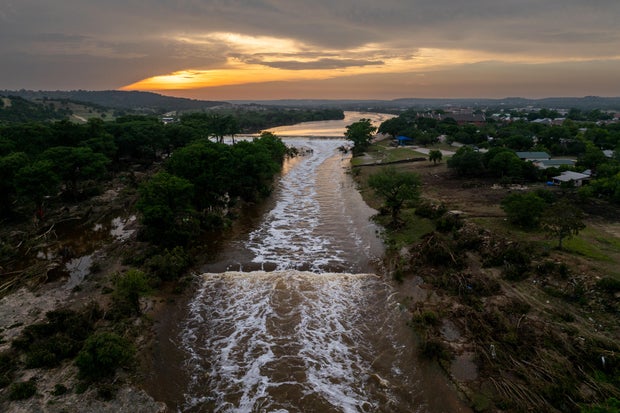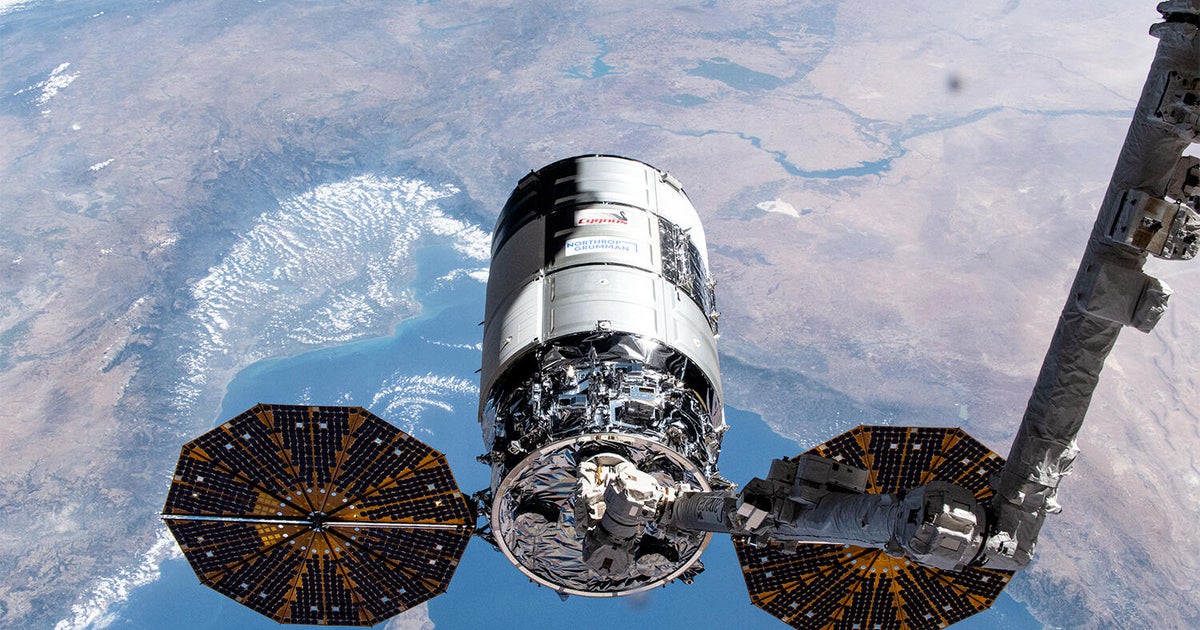Questions over Texas flood warning systems

As the death toll climbs in central Texas from catastrophic flooding over the holiday weekend, many are wondering how the tragic event could have been prevented and who is to blame.
President Trump has declared a major disaster for the state of Texas following flood waters that have claimed more than 80 lives so far. At least 27 campers and counselors from Camp Mystic, a summer camp for girls, were killed in the flooding.
The storm dumped up to 20 inches of rain on some areas, and Guadalupe River at Kerrville rose more than 20 feet in just an hour in the early morning of Friday, July 4. Many officials have begun to point fingers as to why the waters rose so quickly, with so little warning.
During a July 4 press conference, Nim Kidd, the chief of the Texas Division of Emergency Management, said the forecast his office received on Wednesday in advance of the storm predicted several inches of rain, but that "the amount of rain that fell at this specific location was never in any of those forecast."
Kerrville city manager Dalton Rice reiterated that sentiment in the same press conference, saying the storms that hit the areas "dumped more rain than what was forecasted."
But when the same officials were asked why emergency managers didn't do more to alert the public and evacuate campers in the area, they didn't have a clear response, stressing that they were focused on the missing victims.
 Vehicles sit submerged as a search and rescue worker looks through debris for any survivors or remains of people swept up in the flash flooding on July 6, 2025 in Hunt, Texas.
Jim Vondruska / Getty Images
Vehicles sit submerged as a search and rescue worker looks through debris for any survivors or remains of people swept up in the flash flooding on July 6, 2025 in Hunt, Texas.
Jim Vondruska / Getty Images
According to Kerr County Judge Rob Kelly, a top local government official, the area does "not have a warning system," and authorities were shocked by the ferocity of the floods.
The area is prone to flooding, and transcripts of their meetings show Kerr County commissioners discussed whether to install an outdoor flood warning system several times in recent years, but hadn't done so due to the cost.
Timeline of forecasts and warnings
The afternoon before the disaster struck, the National Weather Service office in Austin/San Antonio issued a flood watch on July 3 at 1:18 p.m. CT that included Kerrville. The alert stated: "Rainfall amounts of 1 to 3 inches with isolated amounts of 5 to 7 inches are possible."
But a convergence of thunderstorms sent the rainfall totals higher, and water levels in the Guadalupe River near Kerrville skyrocketed from 0.34 feet at 11:45 p.m. CT on July 3 — well below flood stage — to a raging 34.29 feet by 6:45 a.m. on July 4, according to the U.S. Geological Survey.
A CBS News analysis of the emergency weather alerts in the state of Texas found there were 22 warnings from the National Weather Service for Kerr County and the Kerrville area, where the most catastrophic flooding occurred.
The first warning to residents occurred at 1:14 a.m. CT on July 4, urging people to avoid flooded roadways, but not calling for evacuations. A slightly earlier announcement was issued ahead of midnight for Bandera County, which is adjacent to Kerr.
The first weather emergency alert sent by the National Weather Service with urgent language instructing people to "seek higher ground now" was sent at 4:03 a.m. CT, according to CBS News review of every alert sent to cellphones from July 2 to July 5. At this point the river was rising, roughly 1.74-feet high. But there were no alerts sent to cellphones in the area by Kerr or Bandera local government officials. The only information the public could only rely on was National Weather Service announcements that were sent in the middle of the night and early morning.
During the most critical hours — from 5 a.m. until nearly 7 a.m. CT, when the river rose from 1.82-feet to 34.29-feet because of the 5-10 inches of rain that had fallen — the National Weather Service sent out three critical cellphone messages to Kerr County, which includes Camp Mystic, saying "This is a PARTICULARLY DANGEROUS SITUATION. SEEK HIGHER GROUND NOW!"
Some Kerrville residents told CBS News they received no phone warnings before the flood hit, or that they don't pay much attention to the weather warnings they do receive.
"We get alerts regularly about flash flood warnings," Kerrville resident Heidi Easton told CBS News. "I kind of just swipe … because it usually doesn't mean much."
The Integrated Public Alert Warning System, known as IPAWS, is software used to send emergency text alerts to cellphones, but none were initiated by Kerr County, according to CBS News' analysis. The only notifications sent to the public were the ones from the National Weather Service.
Meteorologists defend National Weather Service forecasts
Local officials have claimed the forecasts were not accurate, and the most extreme rainfall totals did exceed what was predicted. But many experts have come out and defended the work of the National Weather Service.
"There have been claims that NOAA/NWS did not foresee catastrophic TX floods--but that's simply not true," said climate scientist Daniel Swain of UCLA in a social media post, "This was undoubtedly an extreme event, but messaging rapidly escalated beginning ~12 hrs prior."
 An aerial view over the Guadalupe River on July 6, 2025 in Kerrville, Texas, after heavy rainfall caused deadly flooding.
Getty Images
An aerial view over the Guadalupe River on July 6, 2025 in Kerrville, Texas, after heavy rainfall caused deadly flooding.
Getty Images
Concerns about staffing and budget cuts at the National Weather Service have been in the news since the Trump administration took office in January.
The San Antonio and San Angelo weather forecasts offices, which issued warnings for the affected areas, are currently operating with 23 meteorologists on staff, according to union officials for the National Weather Service. The two offices have a combined total of 10 vacancies, including a warning coordination meteorologist in San Antonio, leaving them slightly short of being fully staffed. The warning coordination meteorologist plays a crucial role in coordinating with local officials about severe weather emergencies.
Texas Gov. Gregg Abbott was asked about concerns over staffing levels and budget cuts at the National Weather Service during a Sunday press conference and said he "knows nothing" about its staffing, although he said he did speak to Kristi Noem, the secretary of the Department of Homeland Security, about budgeting for weather offices. Abbott said there are plans to hold a special session of the Texas State Legislature to investigate what happened in Kerrville.
When asked if the federal government should hire back more meteorologists, President Trump said, "I really wouldn't, I think not." He spoke to reporters on Sunday about the Texas flooding, saying, "Nobody expected it, nobody saw it."
But the White House defended the work of the National Weather Service to CBS News and shared numerous reports of statements from other meteorologists, including Jason Runyon, who works for the National Weather Service and said that its office in New Braunfels, which contributes forecasts for Austin, San Antonio and other areas affected by the flooding, had extra staff on duty during the storms.
"The National Weather Service weather forecasts offices in San Angelo and San Antonio got ithe forecast right," said Tom Fahy, the legislative director for the National Weather Service Employees Organization, the union that represents weather service workers. "The forecasters did their jobs."
But Fahy has taken issue with some budget cuts enacted by this administration. He told CBS News that reduced funding for critical weather programs focused on the last level of warnings disseminated to the public are to blame for much of what happened in Texas.
"Tragically, people will die" if funding and increased staffing of meteorologists and other staff are not restored, he told CBS News.
Some of the programs Fahy cited that have been suspended relate to coordinating between NWS meteorologists and state, local, and county emergency management officials and public safety officers. He also raised concern about cuts to research labs that are responsible for studying catastrophic weather events to better understand why they happen and how the public can be better prepared for them.
"This comes down to the warnings and more staff," Fahy told CBS News, "This is why we do this training stuff, and that's why funding has to be restored to strengthen collaborative exercises with the emergency management community to prevent tragedies like this weekend."


















































